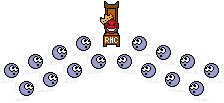Here we go with today's progress.
I only got a couple hours total in today due to being interrupted and having other things to do, but here's what I managed to accomplish anyways.
Before I could really get rolling on starting to make my patch, I spent some time bagging and tagging all the small parts and fasteners from yesterday's interior disassembly. All the parts and bags went into the trunk for short term temporary storage. Space is always at a premium around here, so ya gotta do what ya gotta do.
Only the back seats went into the basement of the house for storage, simply due to their size.
With that chore out of the way, I pulled the car out once more to give me some room to work. Digging through my stockpile of bulk sheetmetal, I found a piece in the right gauge that would be long enough for what I needed. I rough measured out a 6" x 50" piece, and cut it out.
I proceeded to lay out both my final cut lines as well as my flange lines.
The way that I'm going to repair the top of the roof is to cut a piece a bit larger than the hole in the roof, and flange the edges. By flanging the edges, this will provide a "step down" in the patch panel around the perimeter. The flanges will then have panel bond applied to them and clamped to the underside of the roof skin. By doing it this way, I will have no welding to do on the rooftop other than to close up the clamp holes. This will be the most effective way to repair it without the fear of warping the hell out of it with a bunch of welding and grinding.
With the patch panel ready for flanging, I installed a set of flanging dies on my bead roller...
...and set them up. You can see how they work in this pic.
I ran a test piece through the first set of dies I tried, and found they were too deep. Also, the gap between them was too far apart as seen in this closeup:
This is why I always test before I commit. I changed the dies to shallower ones, and set the gap a little tighter. It's tough to tell in the pic, but it yielded a much better result.
Satisfied that I had the machine set up correctly, I enlisted the help of my neighbor to help me flange the patch.
My little bead roller is a fantastic tool, but it's a budget model. In fact, it only came with the top portion, I built the stand, the die hooks, painted it, and changed out the crank handle it came with, to the wheel it has now.
What this all boils down to, is that it pretty much requires two people to get satisfactory results. One to turn the wheel, and one to feed the piece in and guide it along the lines.
We went slow and steady, and didn't rush it. When we had done all four sides, this is what it looked like:
I purposely didn't cut along my final cut lines before flanging, because the step in the flange uses up some material, and would've left me shorter than what I wanted. Once the flanging was done, I cut off the excess material, and left myself an even 1/2" flange all around.
As one final test, and to demonstrate how it's going to work, I placed a scrap piece of sheetmetal along the step in the flange.
As you can see, the two pieces are perfectly flush on the top with each other. This will reduce the amount of filler, blocking, etc to complete the repair.
Now, before anyone questions whether or not panel bond is sufficient or strong enough for this repair, do some research on it. Many high end manufacturers such as McLaren use it exclusively in the construction of their cars. It's commonly used in production body shops to attach box sides to pickup trucks, and other uses.
When properly applied and allowed to cure, it's actually stronger than the surrounding sheetmetal, and will not release or tear in the event of a collision. It's even GM approved!
😀
Continued >>>





















 the 78-80 cars aren't my favorite, but are growing on me, and both yours are great examples of how nice you can get them, even in progress stage.
the 78-80 cars aren't my favorite, but are growing on me, and both yours are great examples of how nice you can get them, even in progress stage.








